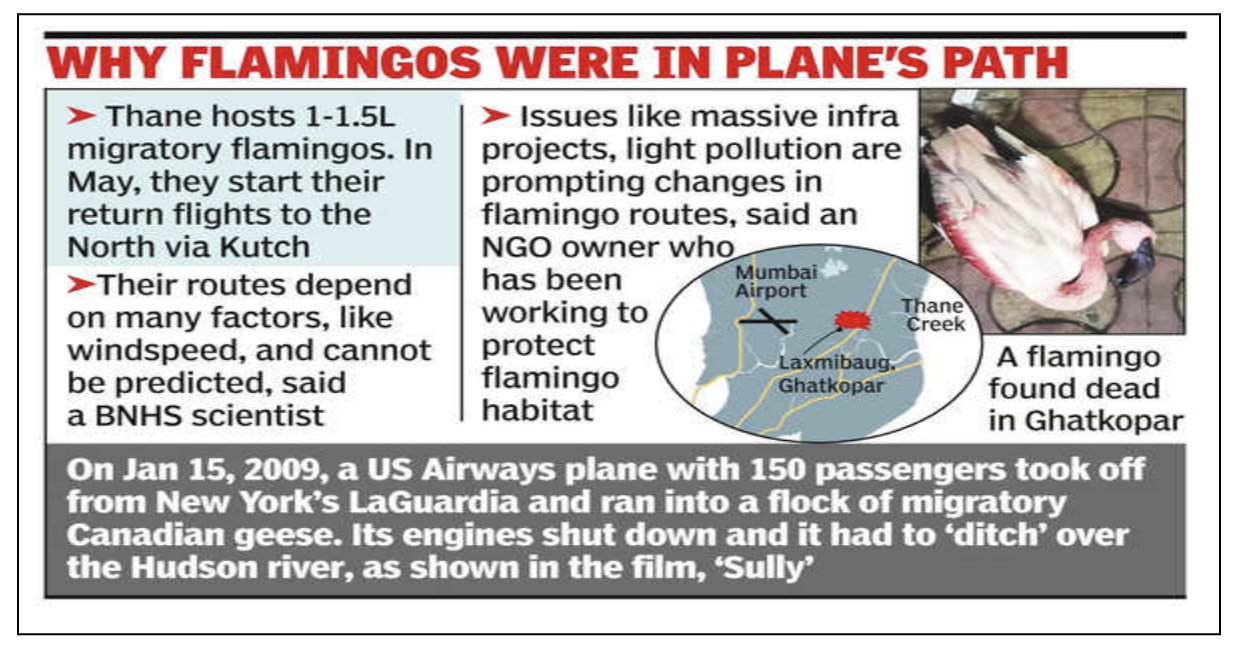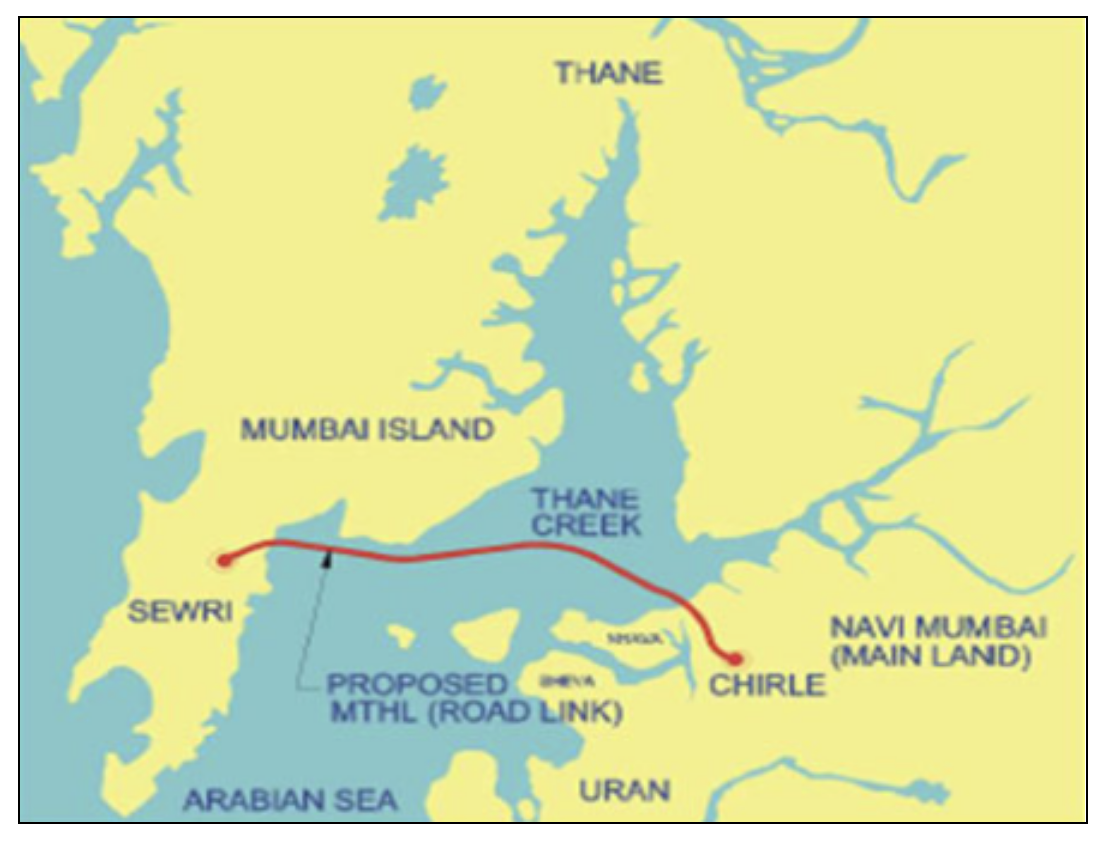News Excerpt:
An Emirates aircraft that was over a minute away from landing at the city airport flew into a flock of flamingos on Monday, killing 39 birds in Mumbai's worst ever human-wildlife conflict.

More detail about news:
- Flamingos began migrating to Mumbai in large numbers in the 1990s, while aircraft have been landing at the city airport since the 1940s. This is the first time that such a major accident involving the two has occurred.
About Flamingo
- The greater flamingo is the state bird of Gujarat.
- Kutch desert sanctuary of Gujarat state located in Bhuj is quite popular for its flamingo city.
- The greater flamingo has selective habitats as they require salty lagoons, deep water, and the sea to survive.
- It is the largest of the species and is most widespread among all Flamingos generally found in different regions of Africa, Asia and Europe.
- In Asia, their distribution range includes the coastal areas of India and Pakistan as these birds prefer salt water lagoons in coastal areas.
- They also inhabit large alkaline and saline lakes.
- Flamingos live, and feed in large flocks, which can consist of thousands in a group.
- The Greater flamingo is the largest species of flamingo.
- They get their unique pink colour from the food they eat, which includes shrimp, plankton, algae and crustaceans.
- They are monogamous bird and lay only one egg per breeding season.
- Greater Flamingo (Phoenicopterus roseus) - IUCN Status - Least Concern
- Lesser Flamingo (Phoeniconaias minor) - IUCN Status: Not Threatened
- Key threats - Habitat loss and disturbance, direct persecution by humans.
Unique Information:
|
Thane Creek Flamingo Wildlife Sanctuary
- This Sanctuary is Maharashtra’s second Marine sanctuary after Malvan (marine) Wildlife Sanctuary which was declared in 1987.
- It is located on the western bank of the Thane Creek between the Vashi and Airoli bridges that connect Mumbai with Navi Mumbai.

- It is spread over an area of 1,690 hectares which include 794 hectares of adjacent water body and 896 hectares of mangroves.
- The adjoining mangrove areas on either side of the creek will be the eco-sensitive zone (ESZ) of the Sanctuary.
- These areas have already been notified as Reserve Forests.
- This is managed by the ‘Mumbai Mangrove Conservation Unit’ under the aegis of Mangrove Cell.
- Every year Thane Creek has been attracting migratory flamingos in large numbers.


